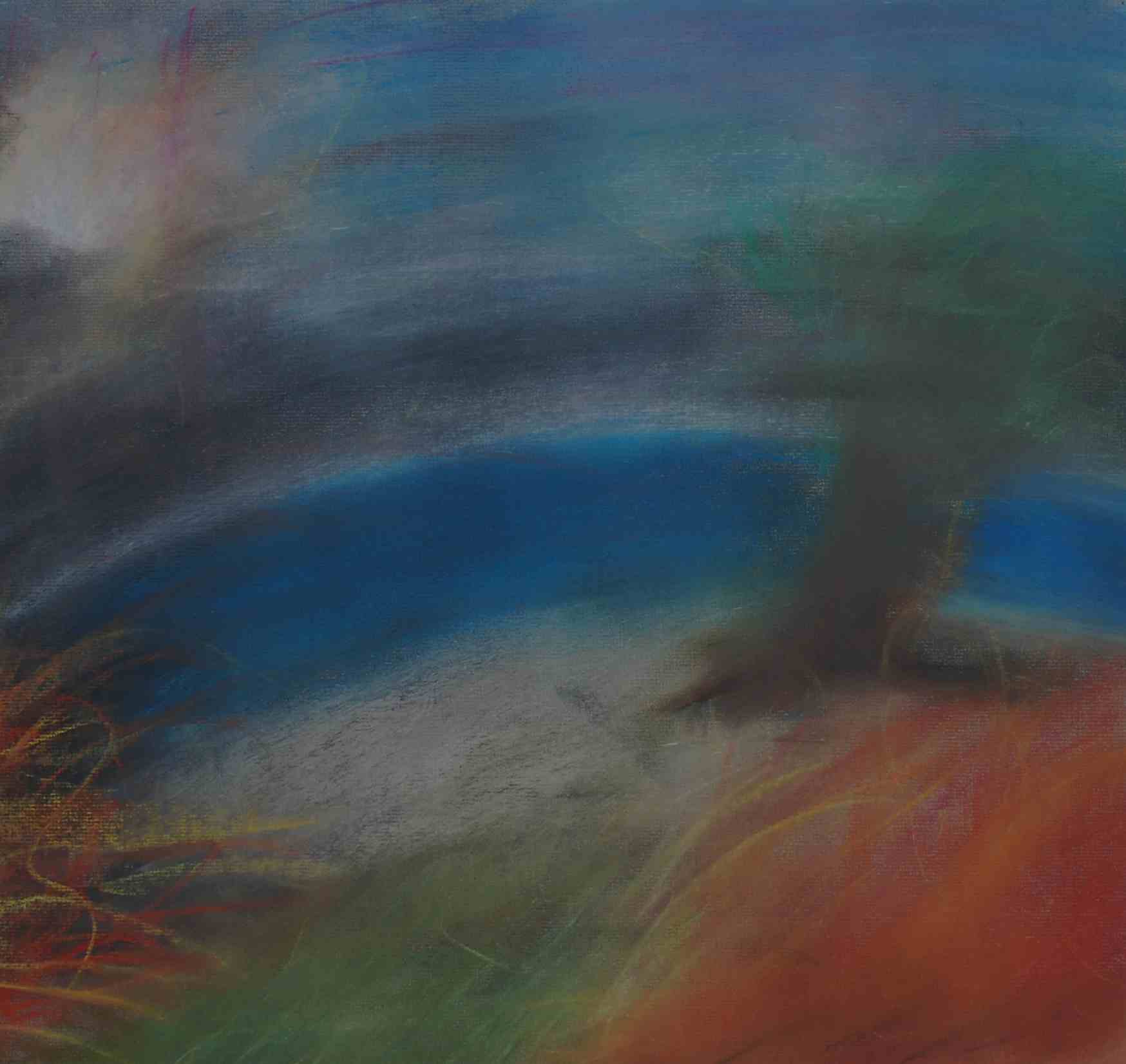Prose vs. graphic narration
So, I was thinking about prose and graphic storytelling (comics). My thoughts might be hard to explain, so how about an example? Here's a line of prose:
“I knocked. No answer. Let myself in anyway. Where was he?”
I think pictures can normally communicate faster than words, but I tried to make that line the opposite on purpose: something that words can express more quickly. Let's look at how we might write that in pictures:

If we were going to print this in a book, those three panels might take up about a third of a page. The line of prose takes about, what, a twentieth of a page? Sure, you can read the pictures faster than you could read a third of a page of text, but that's not what we're comparing. The prose version gets the job done in a single line.
On the other hand, the prose glosses over a lot of details. The pictures show the style of the person's coat, zir attitude about being forced to wait, and a lot of other things. If I got the subtle body language right, the second panel tells us that it's chilly outside. So the pictures really tell us a lot more information, even if it takes up more space.
(The graphic narration also doesn't tell us the gender of the person the main character is seeking. To me, this is an advantage of graphic narration.)
We can also combine the two forms, like this:

That obviously gives all the information from the prose line. It also gives most of the information from the three panels above, and it does it in only one panel. It also has an interesting attribute: It repeats information. You don't need the text to tell you that the person is going through a door. With the text there, you don't need the picture to tell you that the person is going through a door. Either one does the job just as well.
In prose writing (and playwriting and screenwriting), I would normally say that redundancy is bad. You shouldn't explain something more than once, because after the first time, the reader is going to know what it says and be bored by it. And it's even worse in theatre and film, where the reader can't skim over dialogue ze doesn't need to hear.
But that isn't necessarily true in comics. Saying the same thing twice is bad in prose, because in prose, everything you say is part of the narrative flow. The reader can't read two lines at once, so everything you write is going to take up some amount of the reader's time. That means you have to make every detail count.
Not so in comics, where the reader can see the whole picture at once. I mean, think about the silliest example: I drew the coat in every panel. After the first panel, you know the person is wearing a coat. If I was trying to eliminate all redundancy, I would not draw the coat in the later panels. But that's silly. The repetition of the coat is good redundancy, because it doesn't take the reader any extra time to see the coat in the later panels – in fact, it's actually quicker to glance over the same coat than to see something different.
So what's the real rule of redundancy? It's not “don't put any redundancy on the page”. Instead, it is “don't put any redundancy in the narrative flow”. If the reader will have to spend time reading it, don't repeat something they already know. But if they can glance past it, repetition helps the reader understand, so you should repeat yourself as much as possible! (Well, not if it prevents you from doing other cool stuff. But you probably get the idea.)
So, in short, graphic storytelling is a much more condensed format – you can say a lot more stuff without taking any more of the reader's time. So why doesn't everybody do it?
OH YEAH, BECAUSE IT IS ACTUALLY KIND OF HARD.
See the little note at the bottom of the three-panel image? “Eli Dupree - 25 min sketch”? It took me 25 minutes to draw that. And writing the prose line took about 25 seconds. Granted, I'm not very experienced at this right now, and I'll speed up with practice, and in any case it would be quicker to draw if it was an established character of mine rather than someone I had to invent on the spot. But anyway, the point is: Graphic stories are quicker to read, but they're much slower to create.
There's a reason I picked the phrase condensed format: In both prose and graphic storytelling, you start with the same set of cool ideas, but with graphic storytelling, you cram those ideas into a smaller package that the reader can consume more quickly and easily.
And that gets me to one of the really annoying questions about The Purpose Of Art. Because, like, I want to produce the best work possible. But I also want to not spend my whole lifetime on one piece. I could do a lot more than that if I just wrote things that weren't quite as good, but that I could write more quickly. What's the best compromise?
And that's a question that I don't have an answer to!
Incidentally, this post took about an hour to write, in addition to the sketching time.
– Eli
Approximate readability: 5.97 (3827 characters, 909 words, 60 sentences, 4.21 characters per word, 15.15 words per sentence)

 Are my blog posts helpful to you? Consider pledging a few $$$ on Patreon so I can keep putting cool things online for free.
Are my blog posts helpful to you? Consider pledging a few $$$ on Patreon so I can keep putting cool things online for free.
Comments
This points out something I hadn't noticed before. Why do you use gender-neutral pronouns in general writing (such as your post) but not in your compositions like the prose?
It occurs to me that if you chose to use gender-neutral pronouns in all your compositions, people would likely respect that much like they respect e. e. cummings' unconventional capitalisation and punctuation.
On the other hand, I do look for ways to avoid gendered pronouns in my stories. There's a lot of workarounds – if a story isn't set in the real world, I can have the characters use gender-neutral pronouns just fine. And I could use them in third-person narration; I just haven't actually written anything in third person since I started using “ze”.